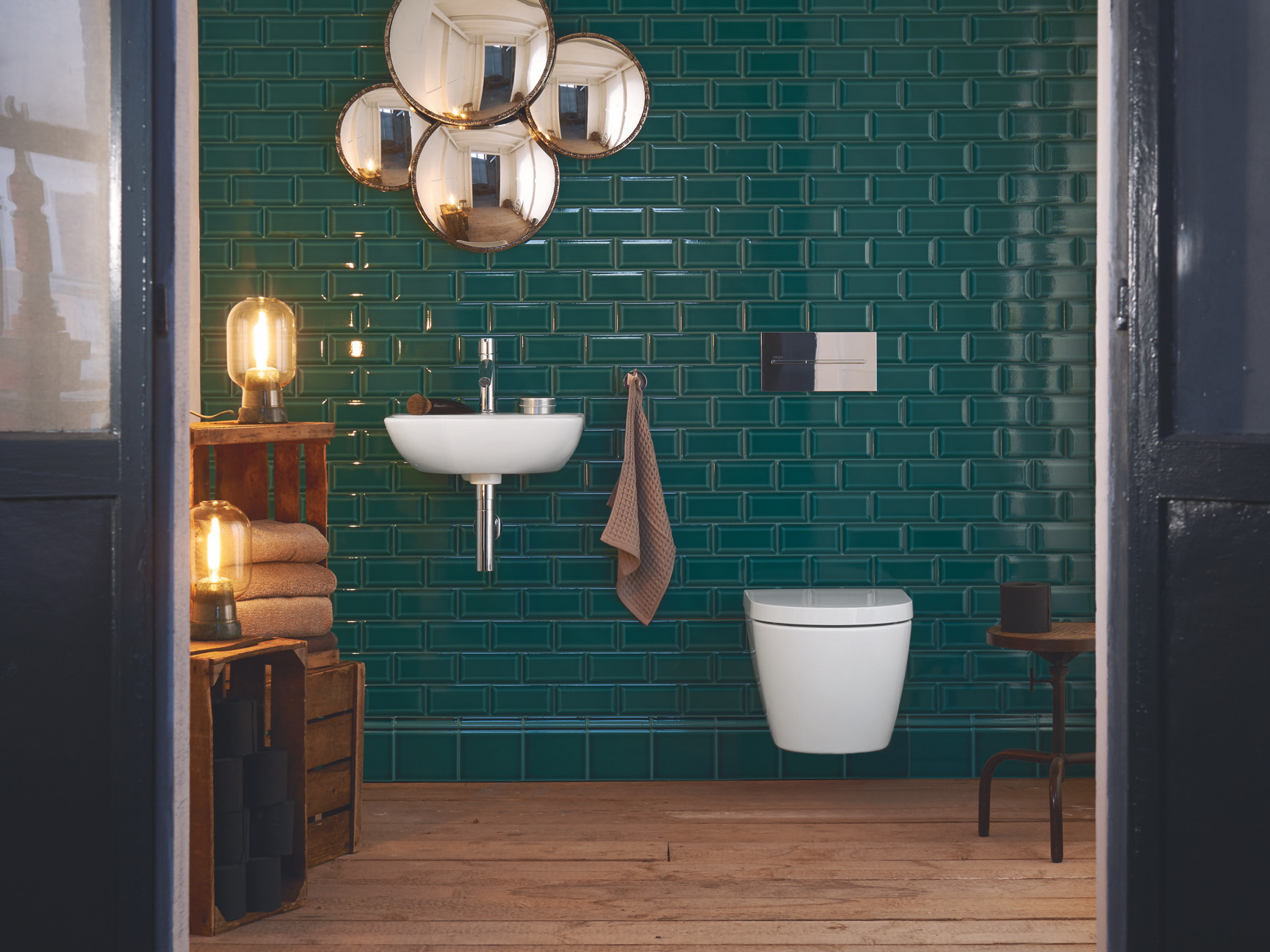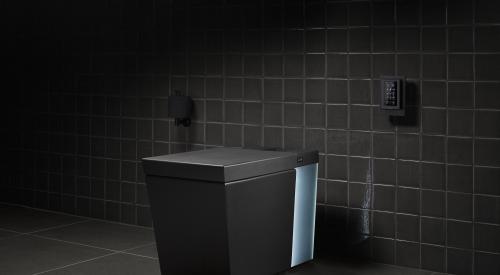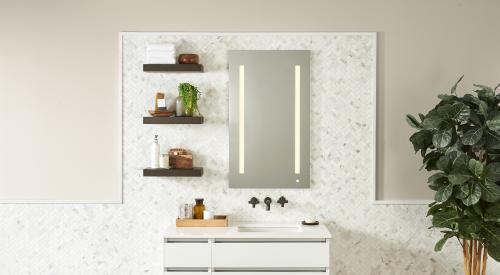Geberit first introduced the wall-hung toilet in 1964, but the concept’s rise in popularity is far more contemporary. Over the last 15 years, wall-hung systems have become more popular in residential design, in part for their space-saving, environmental, and aesthetic benefits.
So what’s the scoop on these floating porcelain thrones?
“A wall-hung toilet with in-wall toilet tank takes the unsightly tank and puts it inside the wall, where it belongs,” says Peter Christofferson, marketing services manager for the Chicago Faucet Company. This setup allows the height to be completely customized, Christofferson explains, easily catering to any accessibility needs a homeowner may have. Typical in-wall toilet systems also include a dual-flush mechanism, helping homeowners save water.
By placing the tank in the wall, designers can save valuable space in small bathroom projects: up to 2 square feet, according to Timothy Schroeder, president of Duravit USA. They also allow easy access to the floor under the bowl for cleaning. Plus, “from a design perspective, a wall-mounted toilet instantly brings a modern, minimal, and sleek aesthetic to any bathroom,” Schroeder says.
The streamlined look and petite footprint come with a few hurdles: Wall-hung toilets tend to be more expensive than their traditional counterparts and should not be installed in walls with poor insulation or where temperatures could drop below freezing. The installation process is more involved because contractors need to break into the wall.
To install a wall-hung toilet, a contractor needs to create an opening between two studs that matches the rough-in. Standard supply and waste pipes should be routed to mate with the system as the rough-in specifi es. After the adjustable-height frame is set and locked down, it should be bolted to the wall studs and the floor. The wall is then closed up and the bowl can be secured to threaded rods. The flush actuator plate acts as an access point for everything inside the wall, including the fill and flush valves.
This story originally appeared in the September/October issue of PRODUCTS. See the print version here.













